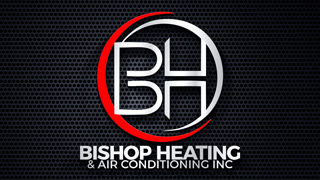
Ceiling fans are one of the most underrated ways to enhance comfort and lower energy costs. By enhancing air circulation and assisting your HVAC system, ceiling fans and energy efficiency are truly a perfect combination. They offer a practical, eco-friendly way to stay cool while easing strain on your AC—even preventing unnecessary air conditioning repair.
In this blog, the experts at Bishop Heating & Air Conditioning explain how ceiling fans can improve your comfort while increasing your HVAC efficiency. We'll also provide some HVAC efficiency tips that take advantage of ceiling fans.
Comfort vs. Temperature: Staying Cool Using the Wind-Chill Effect Indoors
Ceiling fans don’t actually change the room’s temperature—they make you feel cooler by blowing air across your skin. This is known as the wind-chill effect, and it can make a room feel up to 4 degrees cooler without touching the thermostat. That means you remain cool and enjoy the benefits of indoor air circulation from your ceiling fan while relying less on your air conditioner—helping reduce your electric bill in summer.
The Best of Both: Benefits of Using Fans and Air Conditioning Together
There are several benefits to using ceiling fans and air conditioning together, especially when it's very hot outside. By pairing both, you boost HVAC efficiency and maintain a comfortable indoor temperature with less effort from your cooling system.
Benefits of using ceiling fans and AC together:
- Ceiling fans help lower HVAC load by circulating cool air more evenly throughout rooms in your home. Decreasing HVAC stress is important, because it can help you avoid a breakdown that may result in premature AC or furnace installation.
- Using ceiling fans improves your indoor comfort by getting rid of warm pockets and improving air movement.
- Running both ceiling fans and AC can cut energy consumption. If you have a home automation system, you can even adjust your smart thermostat settings to bump up the temp a few degrees while your ceiling fan is running.
Clockwise vs. Counterclockwise Ceiling Fan Rotation: What Direction to Spin in Summer and Winter?
To maximize the benefits of your ceiling fans year-round, it’s important to ensure blades are rotating in the right direction for the season. The direction affects how air flows, which can either cool you down or push warm air downward so you feel warmer.
When to rotate ceiling fans counterclockwise
In the summer, ceiling fans should spin counterclockwise at a quick speed. This creates a breeze that pushes cool air downward, amplifying the wind-chill effect and causing you to feel cooler.
When to spin ceiling fans clockwise
When it's cold out, set your fan to rotate clockwise on a slower speed. This softly moves cold air up and circulates heated air down to where you can feel it, helping you feel warmer without touching your thermostat.
Things to Look for in a Ceiling Fan
Selecting the best ceiling fan depends on a few critical considerations, including blade design, airflow rating and room dimensions. First, look for fans that have a good combination of ECFM airflow and blade pitch to ensure efficient air movement in your home:
- ECFM is the amount of air a fan circulates—the cubic feet per minute, or CFM—per watt of electricity it uses. Fans with greater ECFM are the most energy efficient.
- Blade pitch is the incline of the blades. A sharper blade pitch moves more air but can also strain the motor.
Also, consider room size when sizing a ceiling fan—a fan that’s too small won’t circulate sufficient air, while one that’s too large may be disruptive in a smaller room.
Increase Your HVAC Efficiency With the Team from Bishop Heating & Air Conditioning
At Bishop Heating & Air Conditioning, our HVAC specialists can help you enjoy year-round comfort while minimizing wear on your heating and cooling systems. From efficient ceiling fan strategies and air conditioning installation to smart thermostats and furnace repair, we offer comprehensive solutions that match your needs. Schedule your appointment by calling 760-938-9833 today.
